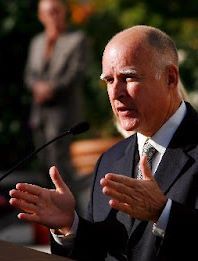School districts seek help with pension bailout costs
by Chris Reed | May 17, 2015 8:25 am
 The bailout of the California State Teachers’ Retirement System enacted last year requires a 70 percent increase in pension contributions from school districts, a 20 percent increase from the state general fund and a 10 percent increase in teacher contributions. When the phased-in increases are complete in 2020-21, CalSTRS will get about $5 billion more a year than it now does, putting it on much firmer ground.
The bailout of the California State Teachers’ Retirement System enacted last year requires a 70 percent increase in pension contributions from school districts, a 20 percent increase from the state general fund and a 10 percent increase in teacher contributions. When the phased-in increases are complete in 2020-21, CalSTRS will get about $5 billion more a year than it now does, putting it on much firmer ground.
But even at a time when school funding has reached an all-time high, districts are apprehensive at having to spend so much more on pensions. This month, their strategy has become clear: establish separate, specific state funding for districts to cover their increased contributions. Ed Mendel of Calpensions.com has more:
… a coalition of school districts, including the giant Los Angeles Unified School District, is proposing a separate budget item for the CalSTRS rate increase within the Proposition 98 school-funding guarantee.
The change would not require the state to spend more money on schools. But the coalition thinks a separate budget item could ensure that funding for the CalSTRS rate increase, as it’s phased in over seven years, “will grow at a predictable rate” for all school districts.
As it stands now, school districts would have to pay for the CalSTRS rate increase with money from a new K-12 funding plan adopted two years ago, the Local Control Funding Formula.
No carve-out from Proposition 98
There had been speculation that the CTA and CFT would seek to have pension funding separated out from Proposition 98 spending — money the state is required to give schools under a 1988 ballot measure that guarantees about 40 percent of revenue goes to K-14 campuses. But that’s difficult under Prop. 98’s dense, specific language.
 Instead, the education establishment expects to use the flexibility and extra dollars provided by the Local Control Funding Formula to pay for the higher pension costs. But that’s not what the change in how schools are funded was supposed to be about, according to its champion, Gov. Jerry Brown. The governor’s website contains a 800-word account [1]of the signing of the LCFF law on July 1, 2013. It depicts the funding change as being solely about getting more help to struggling English-learners, the state’s “neediest students.”
Instead, the education establishment expects to use the flexibility and extra dollars provided by the Local Control Funding Formula to pay for the higher pension costs. But that’s not what the change in how schools are funded was supposed to be about, according to its champion, Gov. Jerry Brown. The governor’s website contains a 800-word account [1]of the signing of the LCFF law on July 1, 2013. It depicts the funding change as being solely about getting more help to struggling English-learners, the state’s “neediest students.”
Brown’s quote in the account:
“Today, I’m signing a bill that is truly revolutionary. We are bringing government closer to the people, to the classroom where real decisions are made and directing the money where the need and the challenge is greatest. This is a good day for California, it’s a good day for school kids and it’s a good day for our future.”
Then-Senate President Darrell Steinberg’s quote:
“Our disadvantaged students deserve more resources to overcome the extra obstacles they face, and this formula does just that. At the same time, we’re investing more resources in all of our students, and building on proven programs of career technical education and partnership academies to keep our students engaged and give them better preparation for college and careers. This dramatic shift in funding allows our schools to target investment where it’s needed most. By empowering our students for success, we pave the way for a stronger California.”
- account : http://gov.ca.gov/news.php?id=18123
Source URL: https://calwatchdog.com/2015/05/17/school-districts-seek-help-pension-bailout-costs/